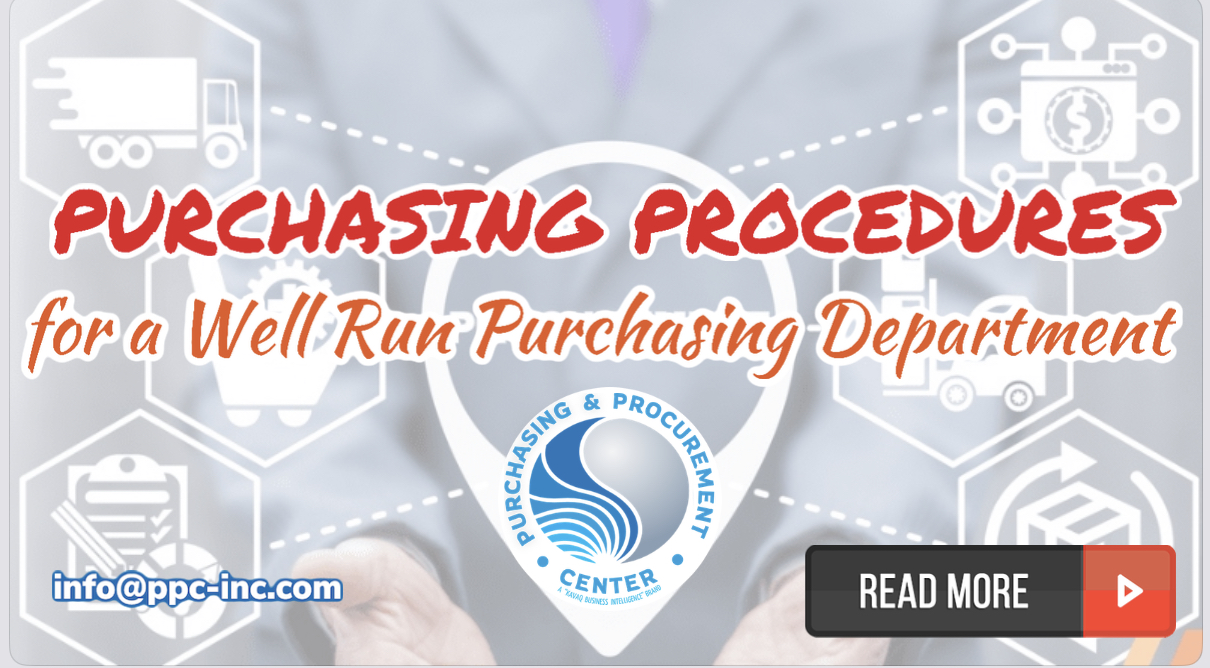
Purchasing Procedures For A Well Run Purchasing Department
In a well run purchasing department there is always a set of purchasing procedures. This is usually a formal document or manual that sets out each person’s responsibilities in the purchasing cycle as well as detailing each of the specific purchasing procedures.
Efficient purchasing procedures are essential for a well-run purchasing department. These procedures provide a clear and consistent framework for purchasing activities, ensuring that all purchases are made in a timely and cost-effective manner while maintaining compliance with organizational policies and applicable laws and regulations.
There are a number of standard purchasing procedures that you will find in most purchasing departments these are:
- Purchase from Key Suppliers. This is where you are purchasing from your normal set of suppliers that all have Master Agreements. This is a fairly painless procedure that can often be done automatically by your computer system.
- Ad hoc Purchases. In times of unusual selling activity or when an unusual item is required there may not be an agreement with a supplier to supply these items. This procedure allows you to make these unusual requests.
- Large Purchases. There may be a time when a large piece of machinery of computer system is required. In this case the purchase is usually put out to tender and several companies are requested to bid for the opportunity to meet this requirement. This procedure is not used often but is usually very well defined due to the potential risk to the company and the high costs involved.
- Change of Purchase. Sometimes purchases are made but then have to be changed for some reason. This is particularly true when standard orders are placed and some change in the market demand or manufacturing process happens.
- Goods Received. There have to be procedures to ensure that the requested goods are received, counted and stored in the correct manner.
- Goods Damaged or Short. There are times when the order you receive is not that which was ordered, there may be damages or shortages. Obviously the amount you pay must be changed; the supplier notified and damaged goods returned.
- Payment. Obviously your suppliers want paying and whilst your computer system can deal with the actual payment, the canny business does not pay until they have to.
- Stock. It is important that the purchasing department ensure that they are not over or under ordering and that all purchased items actually reach the stock room.
- Contracts and Contract Renewals. All suppliers provide their best terms when there is a contract in place. This can often be dealt with by the Master Agreement, but these have to be put into place and renewed. The contracts should include provisions for delivery, payment, warranties, and dispute resolution.
As you can see there are a considerable number of purchasing procedures that need to be set up. Luckily a computerised purchasing system will provide a lot of them but staff still need to understand them and have a number of customised purchasing procedures to work to.
Purchasing procedures are essential for any well-run purchasing department as they ensure that all procurement activities are carried out in a systematic and efficient manner. These procedures provide guidelines for purchasing goods and services, and help ensure that the department operates in a consistent and transparent manner.
In order to ensure that everyone in the purchasing department is working towards the same goals and objectives, it is important to have these procedures clearly documented and easily accessible to all. This allows everyone to understand their roles and responsibilities, and ensures that there is consistency in the way that procurement activities are conducted.
Return from Purchasing Procedures to Purchasing Management
Return from Purchasing Procedures to Purchasing Procurement Center Homepage
